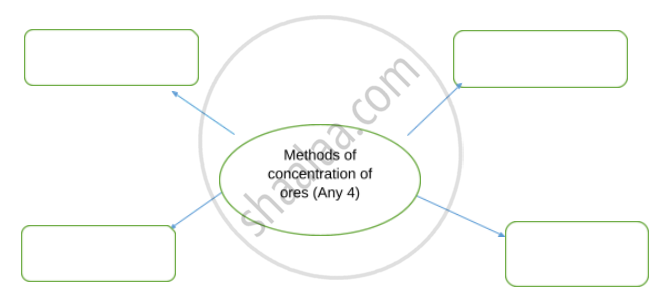Advertisements
Advertisements
प्रश्न
Distinguish between:
Froth floatation - Leaching
उत्तर
| Froth floatation | Leaching | |
| 1. | The froth floatation method is based on the two opposite properties, hydrophilic and hydrophobic, of the gangue and ore particles respectively. | Leaching method is based on the dissolution of ore particles in a certain solution. |
| 2. | There is no chemical reaction involved. | There is a specific chemical reaction between ore and the solution used for leaching. |
| 3. | This method involves the formation of froth from oil, water, and air bubbles together, due to the agitation. | There is no formation of froth. |
| 4. | This method is used for concentration of zinc blende and copper pyrite. | This method is used for the concentration of bauxite. |
APPEARS IN
संबंधित प्रश्न
Give the importance of the following for living beings:
Carbon
Explain the following terms:
(a) flux
What do you observe when hydrogen is passed over heated copper oxide?
Name the methods used for purification?
`MnO_2 + 4Al`  …………….
…………….
`2NaNO_3` ......................
......................
Give the ionization reactions of electrolyte used in Hall’s process. write the reaction at the cathode and the anode. Why the anode has to be replaced in this process?
state the reactions at the two electrodes ?
How is it removed?
Which metal is used for:
making face creams
State two properties of brass that render it more useful for some purpose than its components.
Aluminium is extracted from its chief ore, bauxite. The ore is first purified and then the metal is extracted from it by electrolytic reduction.
Write three balanced equations for the purification of bauxite.
A compound that is added to lower the fusion temperature of the electrolytic bath in the extraction of aluminium.
What do you observe when hydrogen is passed over heated copper oxide?
Complete flow chart given below.

State the reason for the addition of caustic alkali to bauxite ore during the purification of bauxite.
Which of following metals occurs in native state?
Calcination is used in metallurgy for the removal of?
